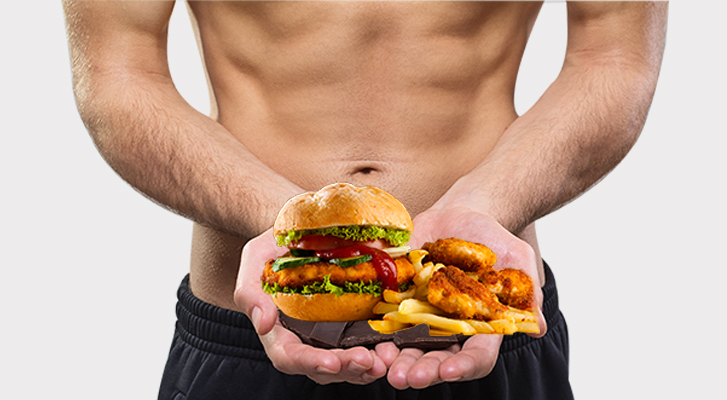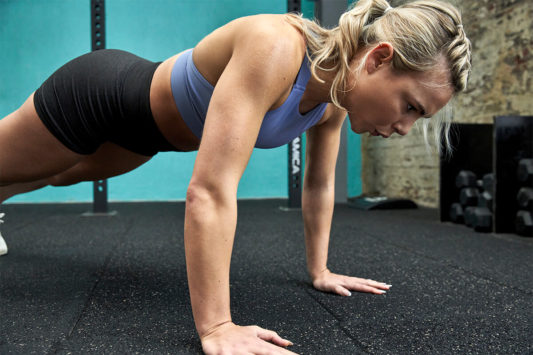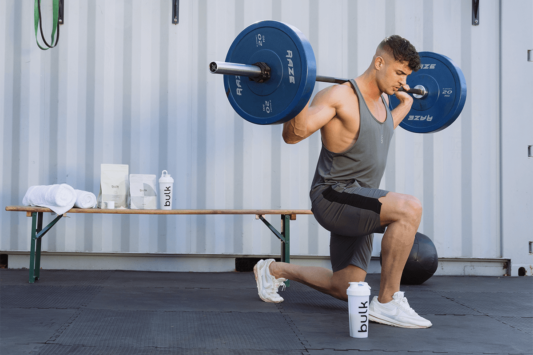Getting strict with nutrition can start small (getting your recommended amount of protein per day) and end up pretty hardcore (‘clean’ foods only) – if you are aiming to maximise your strength, cut fat without cutting muscle or cut fat whilst gaining muscle, then you’ll probably already be aware that every calorie counts. The problem with this is that staying controlled over your diet for a long period of time eventually becomes too much like hard work, and most people start to crave their favourite ‘banned’ foods for the occasional treat.
That’s where the cheat meal comes in – a preventative measure for binging and a chance to tuck into the foods you’ve been craving in a controlled manner.
We’d like to know if you include cheat meals in your diet, and if so, what kinds of food you hold out for. Simply fill in our quick and easy survey below to tell us the food that you look forward to eating the most, and we’ll report back with the results in a couple of weeks.
What is your favourite food for a cheat meal? * (choose up to three answers)Undecided about cheat meals…? Then read on as we look into when and why a break from your diet may be needed.
Cheat meals are not an excuse to binge
First things first: a cheat meal is not an excuse to binge. It’s a few slices of pizza instead of two entire stuffed crust Dominos. Secondly, it’s a meal – not a day, not a weekend, not a week. A cheat meal only works to boost your mental strength because it’s little, often and pre-planned. It’s the eagerly anticipated treat at the end of a tough week when work is hard, training is harder, and you are thoroughly sick of rice.
Cheat meals do not encompass a spontaneous blip or the ‘accidental’ consumption of foods. Cheat meals are a thoroughly deserved reward – not an excuse to eat junk. This means that until your cheat meal you must follow your diet to the letter – otherwise you won’t need or deserve your reward.
Cheat meals have some scientific reasoning behind them which include metabolism boosting benefits and a rise in glycogen levels to keep you full of energy for your workout, but they do still need to be handled with care. Tripling your calorie intake in one meal will leave you with calories sent to fat cells and a bit of a hit on your metabolism too (not enough to cause any serious or long lasting damage though). Plus anyone undertaking a diet such as the Atkins will know that the reason this diet works is because it kicks your body into ketosis. Taking your body out of ketosis by consuming carbs will leave you with the hard work of getting yourself back into that state.
How often should you treat yourself?
If you are going to choose a cheat meal, how often should you treat yourself? Realistically, not more than once a week, otherwise your hard work will quickly come undone. But if you decide that this approach is going to work for you, make sure that you do stick to your planned regime and include them, otherwise your mental stamina can weaken and morale about sticking the diet you have chosen will drop.
Taking a break in your diet for a cheat meal is not for everyone, and some people prefer to refeed. A refeed is a 50% increase in carbs every three to four days, and a 10% lower amount of protein and fat. Many people find that this has the same benefits of a cheat meal – boosted leptin metabolism and glycogen – but leaves none of the sense of guilt afterwards!
It is said that the longer you deprive someone of something that they want, the higher the chance is that they will eventually give in to it – and not everyone has the willpower to hold out. A cheat meal (or refeed) stops the torture of denying yourself food you are craving, but at a regulated (guilt free) opportunity.
By indulging once in a while the idea is that the long term chances of continued adherence to a diet will be stronger, and the chance of continued success will be higher. We often hear stats that say a healthy diet should be 80% good foods and 20% bad food, but we think that most of our customers would probably fit into the 90- 95% good food ratio – meaning that a controlled 5-10% of bad food can certainly be enjoyed.
The Rock
The Rock became infamous for his cheat meals during preparation for his role as a bodybuilder in the 2013 film ‘Pain and Gain’. Needing to take his physique to the next level, The Rock posted various images and excerpts from his diet and training schedule. Most went viral due to their extreme natures, and the cheat meal images are no exception!
His infamous cheat meal of 12 American style pancakes, four pepperoni pizzas and 21 brownies was washed down by a giant jug of milk – which must have been a shock to his system after months spent eating only ‘clean’ foods such as egg whites, grilled chicken breasts, vegetables, sweet potatoes and extra lean red meat.
Image taken from www.healthylivingheavylifting.com
Does your cheat meal make The Rock’s look like a small snack? Or does eating clean 24/7 work for you? Let us know via Facebook or Twitter.









